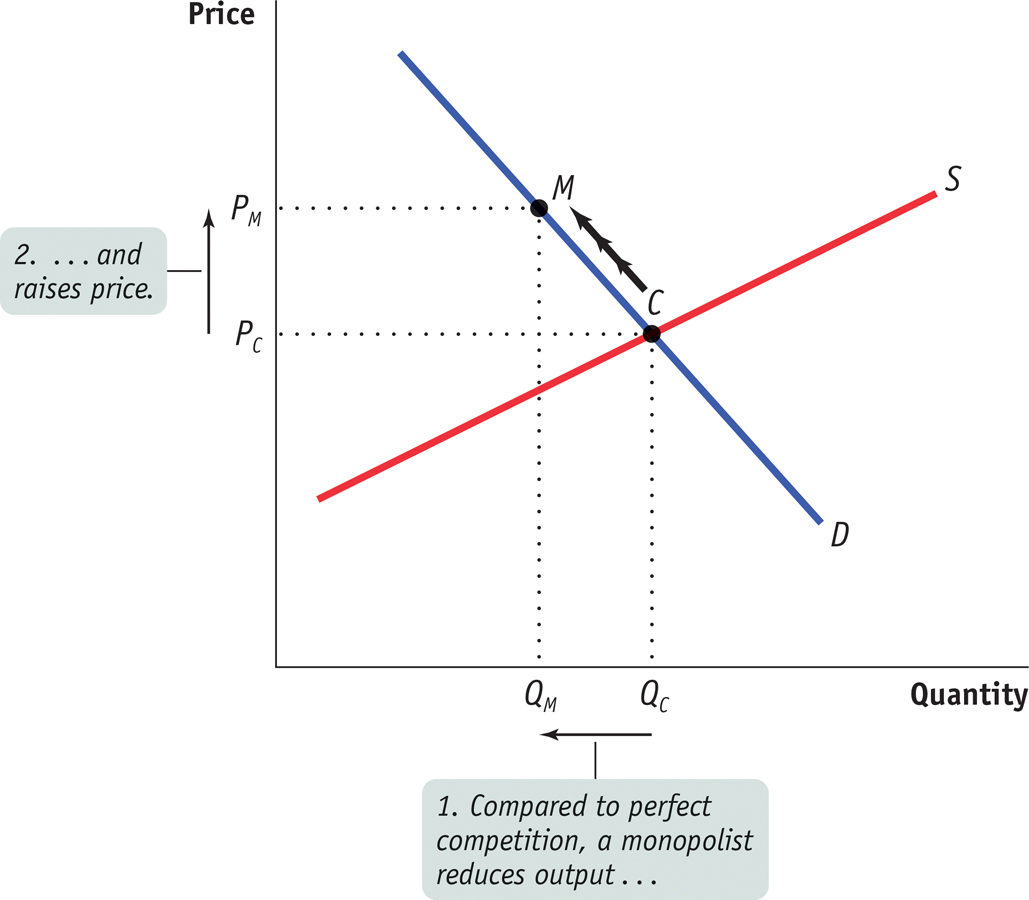What Monopolists Do
Why did Rhodes want to consolidate South African diamond producers into a single company? What difference did it make to the world diamond market?
Figure 13-2 offers a preliminary view of the effects of monopoly. It shows an industry in which the supply curve under perfect competition intersects the demand curve at C, leading to the price PC and the output QC.

Suppose that this industry is consolidated into a monopoly. The monopolist moves up the demand curve by reducing quantity supplied to a point like M, at which the quantity produced, QM, is lower, and the price, PM, is higher than under perfect competition.
Market power is the ability of a firm to raise prices.
The ability of a monopolist to raise its price above the competitive level by reducing output is known as market power. And market power is what monopoly is all about. A wheat farmer who is one of 100,000 wheat farmers has no market power: he or she must sell wheat at the going market price. Your local water utility company, though, does have market power: it can raise prices and still keep many (though not all) of its customers, because they have nowhere else to go. In short, it’s a monopolist.
The reason a monopolist reduces output and raises price compared to the perfectly competitive industry levels is to increase profit. Cecil Rhodes consolidated the diamond producers into De Beers because he realized that the whole would be worth more than the sum of its parts—
In fact, monopolists are not the only types of firms that possess market power. In the next chapter we will study oligopolists, firms that can have market power as well. Under certain conditions, oligopolists can earn positive economic profits in the long run by restricting output like monopolists do.
But why don’t profits get competed away? What allows monopolists to be monopolists?